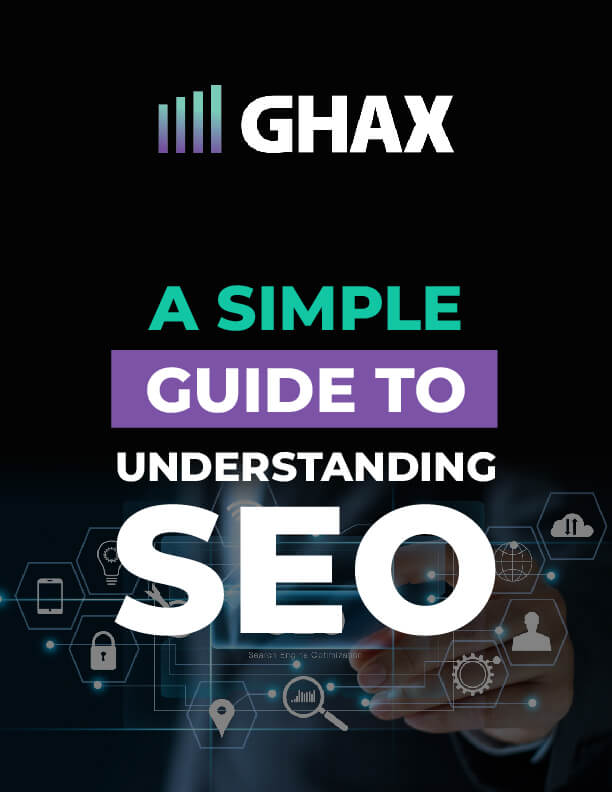Typically, if your product listing page ranks at the top of Google search results, you can look forward to a flood of eager buyers. That’s because many people who search for products online stay within the first page of Google search results.
A well-optimized product listing page compels visitors to buy. It can easily turn curious browsers into satisfied customers.
This guide is your passport to product page SEO mastery. We’ll equip you with actionable steps and proven strategies to conquer Google search and land your pages at the coveted top spot.
Understanding Your Target Audience and Keyword Landscape
Ranking on the first page of Google can be a golden opportunity, but only if it connects you with the right audience. The goal should be to put your product listing page at the top of Google search results amid a sea of relevant queries.
Meet Your Perfect Buyer
Your perfect customer is the one whose eyes light up with genuine excitement upon discovering your product. You must delve deeper into their digital persona to truly connect with them. Here are some tips to guide you:
Consider Their Age and Life Stage
Firstly, consider their age and life stage. They can be a tech-savvy teenager, a busy professional, or a retiree seeking comfort and convenience. Understanding their life stage enables tailoring your message to resonate with their needs.
Identify Needs and Pain Points
Next, identify their needs, pain points, personality, and interests. Discover what drives them and what keeps them awake at night. For instance, they may need help with time management, crave authentic connections, or dream of achieving financial independence.
Analyze Online Behavior and Search Habits
Finally, analyze their online behavior and search habits. Every audience has preferred channels where they spend their digital time. For example, while some are social media users, others are dedicated blog readers.
Knowing their preferred channels and search language enables you to reach them effectively. This ensures your message is relevant, guiding them to your product page.
Conduct Keyword Research
Your target audience or ideal customer has certain words they use when they search for your products on the internet: keywords. These keywords are not just ordinary words, but they reveal the intentions of your buyers.
There are different kinds of keywords, but when creating a product page, you should concentrate on high-intent keywords. In this case, focus on phrases clearly showing the intention to buy. For instance, “top X for Y under $100” or “buy eco-friendly shoes with complimentary shipping.”
Another vital keyword research hack is competitive analysis. Spy on your competitors to determine which keywords they’re targeting and their success in ranking for those terms. You want to uncover valuable insights into gaps in the market, identify high-performing keywords, and refine your keyword targeting approach.
Optimize Product Pages for Google & Users
Crafting a product page may seem like a common task, but achieving a top spot on Google search results requires more than creating content. SEO optimization is the secret sauce that makes your content stand out in the competitive world of Google searches.
Employing SEO tactics can boost the visibility of your product page and increase its chances of ranking higher. Fine-tuning your SEO approach will assist you in preserving and elevating your position in search results. Here are the tips for developing SEO-friendly product pages:
Write SEO Title Tags
Headlines are the first impression, so make them count. Craft attention-grabbing titles that weave in relevant keywords naturally. Think “Best Running Shoes for Flat Feet (2024 Guide)” or “Eco-Friendly Yoga Mats: Sustainable Comfort for Your Practice.” These titles inform users and signal to search engines what your page is about, boosting ranking potential.
Make Your Meta Description Captivating
This enticing snippet is your elevator pitch to convince users to visit your product page. Write irresistible descriptions highlighting key features, benefits, and unique selling points. For example, “Experience ultimate comfort and support with our top-rated running shoes. Shop now for free shipping and exclusive discounts.”
Structure Headings & Subheadings for Clarity
Like a well-organized book, your product listing page needs a clear structure. Use headings and subheadings to break down information, guide users through key features, and enhance readability. Remember, search engines love well-structured content too.
Craft Product Descriptions That Sell
Forget generic copy and weave a story that resonates with your ideal customer. Highlight features and benefits and address their pain points. Use persuasive language, social proof, and calls to action that entice them to “Add to Cart.” Remember, you’re not just selling a product but offering a solution.
Optimize Images & Videos for Google Search
A picture can make a world of difference for your product page, but optimize it first. Use high-quality visuals that showcase your product from multiple angles and in use. Use descriptive alt text for images and videos-it helps users and search engines understand what they’re seeing.
Get a UX designer to design your product images. Their expertise in user experience (UX) design can elevate your product images’ visual appeal and functionality. This ensures they look great and enhance the overall user experience.
Embrace Technical SEO Essentials
Ensure your product page loads lightning-fast on all devices. Consider mobile friendliness, as more and more users browse on their phones. These technical aspects, though invisible, hold immense power to keep users engaged and search engines happy.
Leveraging Blog Posts for Product Listing Page Visibility
It would be best if you also had a blog posting strategy to boost the visibility of your product pages. Blog posts can improve the SEO of your product pages. Websites with blog posts have 55% more traffic than those without.
Create “Best X for Y” and “A guide to buying X” blog posts targeting relevant keywords. These posts will provide valuable information for your audience. They will also help include keywords related to your products, improving your search engine rankings.
Structure the link flow like this: blog post targeting a key word > post links to product category page > product category page links to product
Internal Linking: Building a Powerful Navigation Network
Internal linking connects your product page to other relevant pages, creating a robust SEO network. Think of links as friendly invitations, guiding users deep into your site and boosting your product’s visibility.
If your product page listing is for a specific product type, link to relevant category pages showcasing your entire range. This helps users explore options and discover other products they might love.
Connect relevant blog posts and category pages to your product listing page for increased traffic flow. For example, if you sell hiking boots, feature blog posts about “Best trails near [city]” or “Tips for choosing the right hiking boots.”
By interlinking your blog posts with your product listing pages, you can direct traffic from your blog to your product pages. You can increase visibility and drive potential customers closer to buying.
Building High-Quality Backlinks for Product Listing Page Authority
Another secret weapon of high-ranking pages is backlinks. The more high-quality websites link back to your website, the more Google sees it as an authoritative source.
Share your expertise by writing guest posts on relevant websites in your niche. Include a natural backlink to your product pages within your post. Make sure the link provides valuable information to readers.
Dive into online communities and forums related to your products. Offer valuable insights, participate in discussions, and build relationships with other users. As you establish your expertise, opportunities for natural backlinks may arise.
Partner with relevant influencers in your niche. They can review your products, mention them in their content, and provide valuable backlinks that resonate with their audience.
Network with other businesses in your niche. Explore co-branding opportunities, joint promotions, or guest blog exchanges. These collaborations can lead to mutually beneficial backlinks, expanding your reach and boosting product listing pages.
Tracking & Measuring Your Google Ranking Journey
Boosting your Google ranking is a challenging task. Your SEO strategy can pay off or let you down. Like most strategies, you must monitor your outcomes to determine the way forward.
If your SEO efforts are not paying off, you’ll need to find areas of failure and implement improvements. Key Metrics to monitor include website traffic, conversion rates, keyword rankings, and more.
Utilize analytics tools and data insights to track progress and make informed adjustments. SEO Tools & Techniques play a crucial role in this process. These tools can help you identify poor keywords, analyze competitors, and uncover new markets.
Regularly review your product page SEO strategy and adapt it based on the changing landscape and your business goals. Continuous monitoring and adjustment are essential for staying competitive and maximizing online visibility.
Boosting Your Google Search Results Starts Now
Your product listing page plays a crucial role in driving online sales. Boosting your Google search results and increasing traffic hinges on implementing effective strategies.
Develop detailed buyer personas and perform thorough keyword research to guarantee your content is relevant to your target audience. Address their pain points and communicate in a way that connects with them.
Keep in mind that SEO is a long-term investment and can be intricate. For optimal results, consider seeking assistance from e-commerce SEO experts. Schedule a call to kickstart a successful SEO strategy from the beginning.




